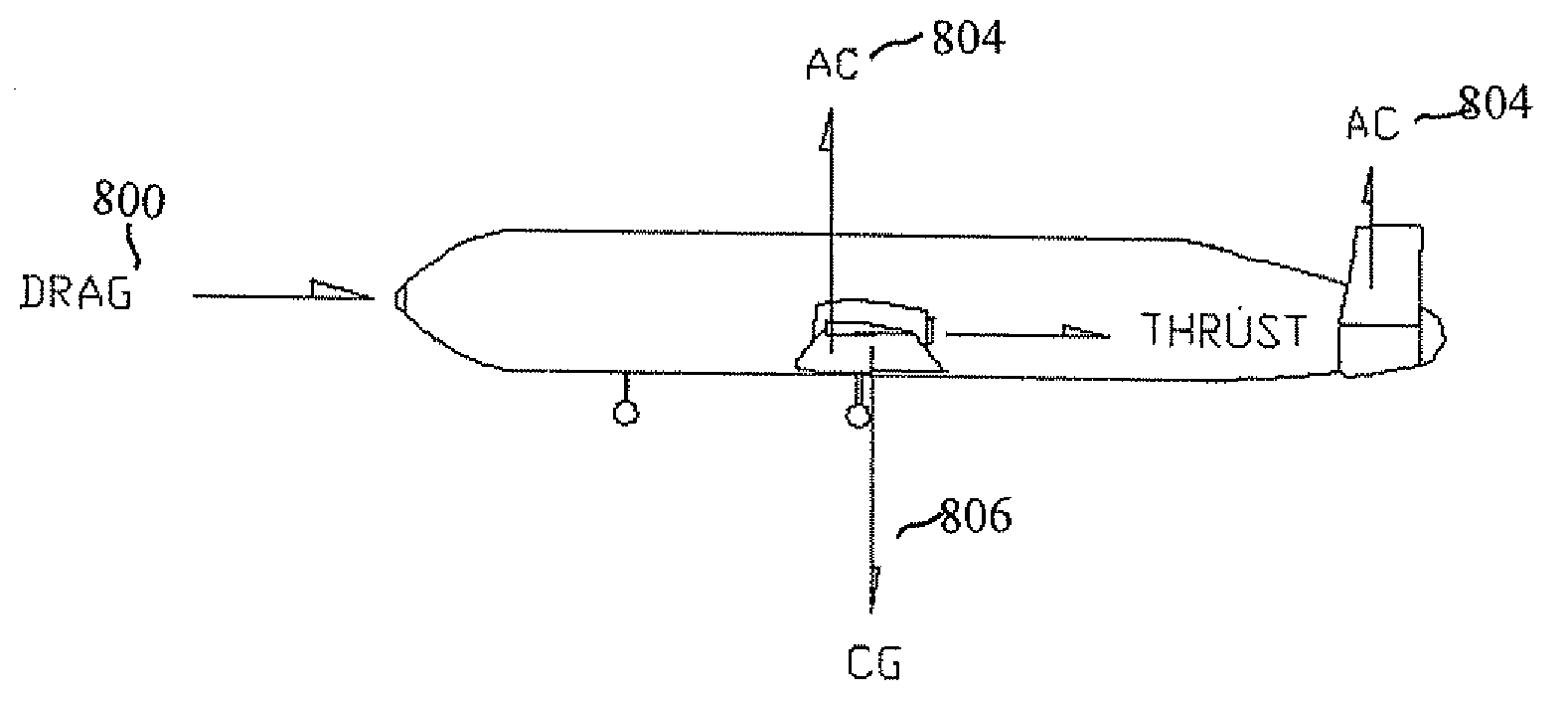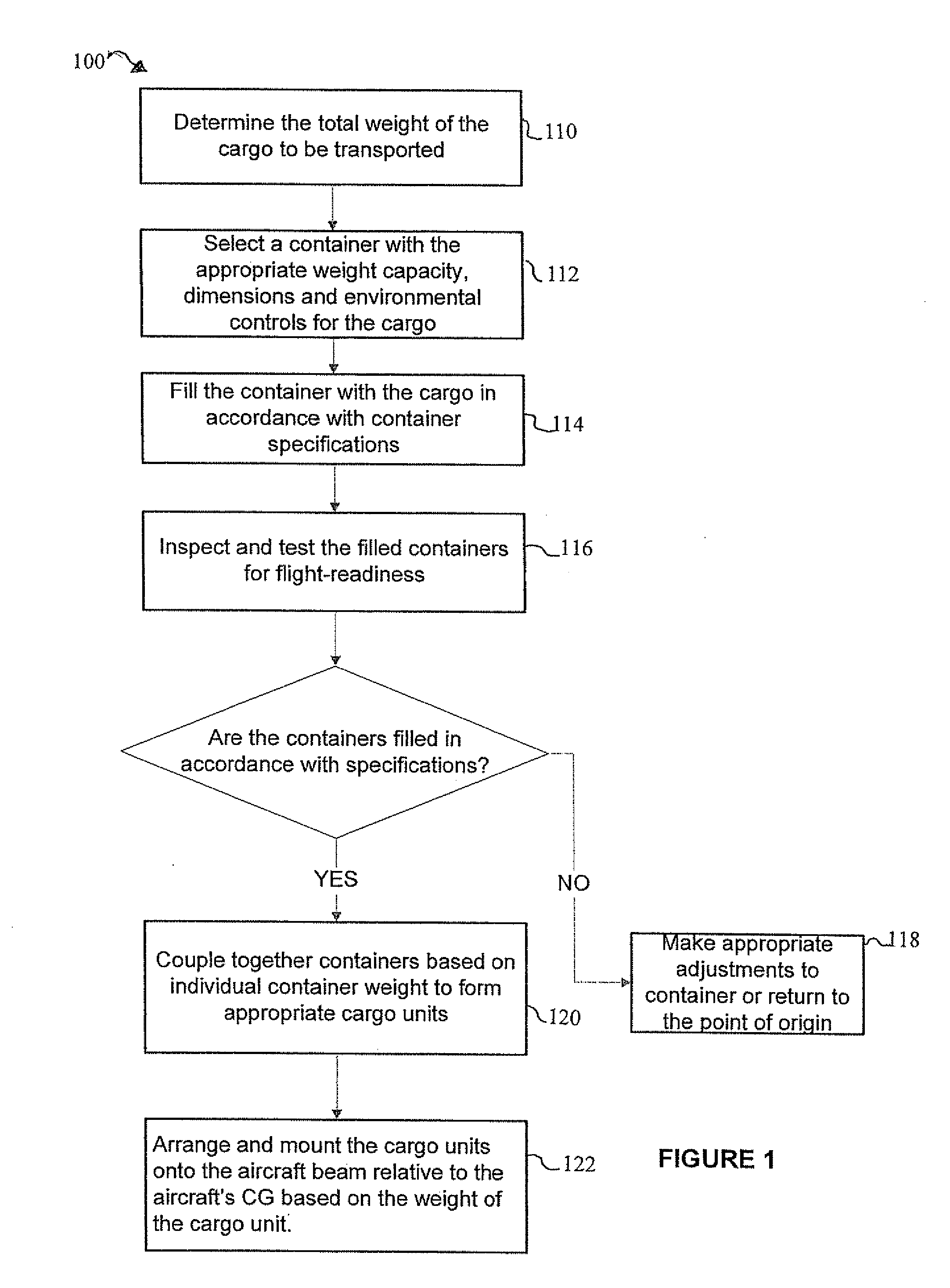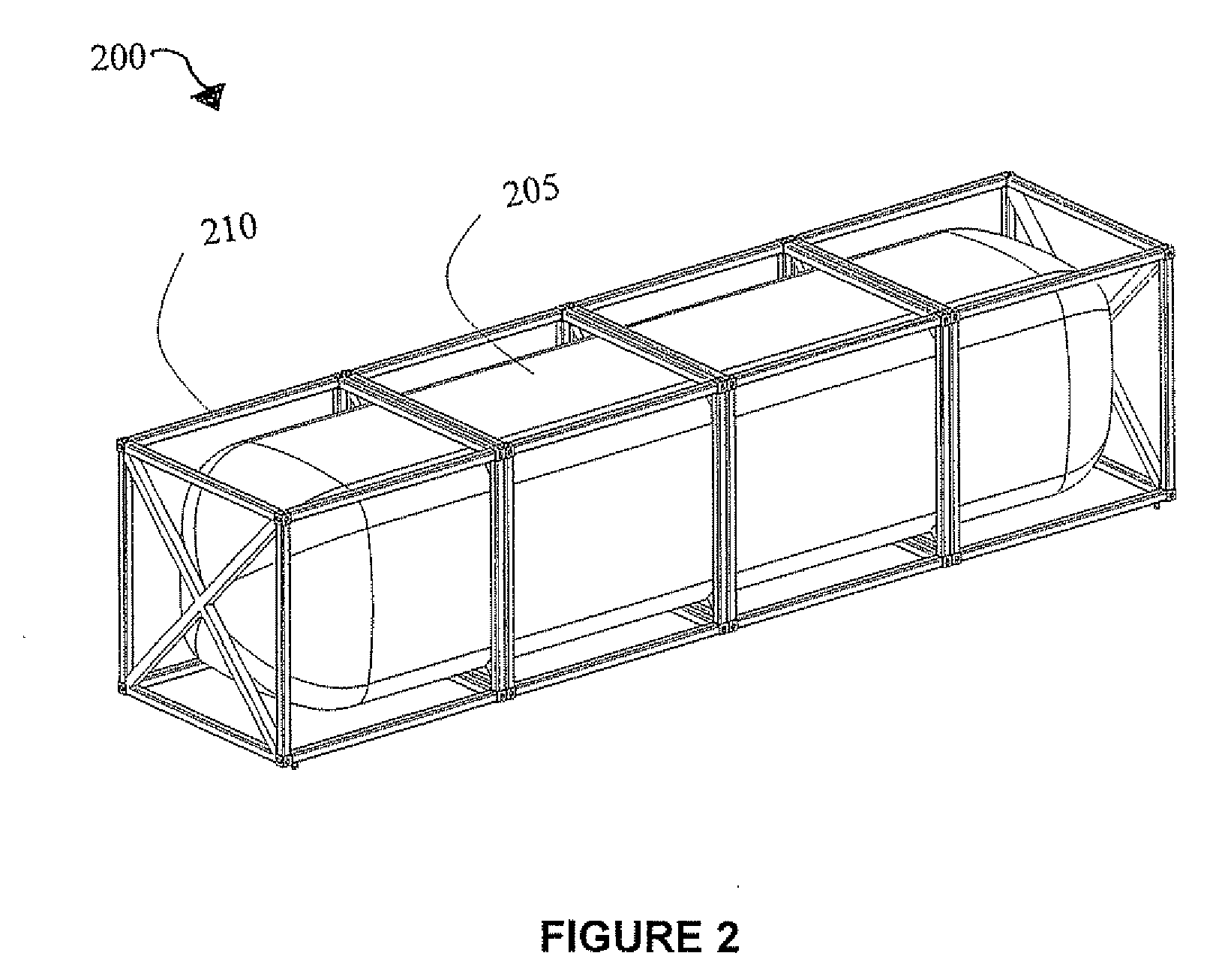Methods for fuel-efficient transportation of cargo by aircraft
a technology for aircraft and cargo, applied in the field of cargo aircraft, can solve the problems of poor aerodynamic and fuel efficiency, high cost, and low fuel efficiency of jet engines, and achieve the effects of less concern for speed, high fuel efficiency and low speed
- Summary
- Abstract
- Description
- Claims
- Application Information
AI Technical Summary
Benefits of technology
Problems solved by technology
Method used
Image
Examples
Embodiment Construction
[0038]FIG. 1 is a flow diagram showing exemplary steps of a method 100 for transporting cargo to a desired location via an aircraft. As shown in step 110, the weight of cargo that is capable of being transported in a single container is determined. Since containers are available in a number of different standard sizes, the weight of the cargo to be transported will depend on the size of the desired container that will be used to transport it. Intermodal containers, for example, are available in a number of standard lengths, such as 20, 40, 45, 48, and 53 ft, and container capacity is typically measured in twenty-foot equivalent units. Because containers are available in a wide range of dimensions, there is flexibility with respect to whether and how cargo may be apportioned out among any number of containers.
[0039]Once the total weight of the cargo is determined, a container having the appropriate maximum weight capacity and environmental controls is selected 112. Since the containe...
PUM
 Login to View More
Login to View More Abstract
Description
Claims
Application Information
 Login to View More
Login to View More - R&D
- Intellectual Property
- Life Sciences
- Materials
- Tech Scout
- Unparalleled Data Quality
- Higher Quality Content
- 60% Fewer Hallucinations
Browse by: Latest US Patents, China's latest patents, Technical Efficacy Thesaurus, Application Domain, Technology Topic, Popular Technical Reports.
© 2025 PatSnap. All rights reserved.Legal|Privacy policy|Modern Slavery Act Transparency Statement|Sitemap|About US| Contact US: help@patsnap.com



